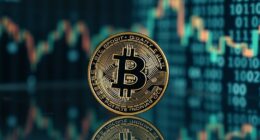You might be wondering how the Federal Reserve's recent decision to pause rate cuts could impact the markets. The move comes amid a balanced labor market and solid economic growth, but it raises questions about the future. With traders eyeing potential rate cuts later this year, the Fed's strategy seems to hinge on navigating uncertainties. What does this mean for your investments and the broader economy? The answer could reveal more than you expect.

As the Federal Reserve paused rate cuts during its January 2025 meeting, you might be wondering how this decision will impact the markets. The Fed's choice to maintain the federal funds rate at 4.25-4.50% signals a cautious approach, reflecting a balanced labor market and solid economic growth.
While you might've expected more aggressive action, the Fed's hesitation suggests that they're taking a measured stance and keeping an eye on various economic indicators.
Recent GDP growth data revealed a 2.3% increase, although slightly below consensus expectations. Still, it indicates that the economy is performing well. Consumer spending remains robust, playing a key role in this growth. Additionally, the strong labor market supports the Fed's decision to pause rate cuts.
However, fixed investment has contracted for the first time since 2023, which may influence future Fed decisions. With initial jobless claims down and continuing claims stabilizing, the labor market appears to be in good shape. Inflation expectations are well-anchored too, meaning there's less urgency for immediate rate cuts.
In the markets, reactions to the Fed's statement were mixed at first. Some risk assets fluctuated in response to what was perceived as hawkish language. However, Chair Powell reassured everyone that this wasn't a shift in policy, which led to a rebound in risk assets.
You might find it interesting that about 60% of traders now predict at least two quarter-point cuts later in 2025. This pause could actually reinvigorate the markets as investors reassess and digest current economic conditions.
Looking ahead, the Fed is likely to stay on hold for the first half of 2025, with potential rate cuts possibly occurring in July, September, and December. This timeline will depend heavily on how the economy performs.
Economic uncertainties, such as inflation and labor market risks, will continue to influence their decisions. If you're a saver, high-yield savings accounts and CDs might be particularly attractive during this period.
Ultimately, while the pause in rate cuts may seem uneventful at first glance, it sets the stage for future market dynamics. With a careful eye on economic conditions, the Fed is navigating a complex landscape.
You'll want to stay tuned, as the decisions made this year could have lasting implications for the markets and your investment strategies.









